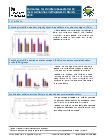Educational outcomes for looked after children in care

Education Secretary Damian Hinds responds to the statistics out today on outcomes for looked after children and additional information on Children in Need.
Education Secretary Damian Hinds said:
“Education is the key to unlocking potential, and we cannot ignore the stark reality of the poorer outcomes for children who face chaotic lives or have experienced trauma or adversity.
“Society shares responsibility for improving outcomes for vulnerable children. That is why we’ve provided practical advice to schools and social workers to adapt the way they support them, including having a consistent and trusted member of staff to talk to. We are also investing £84million to support families and help provide stability at home.
“School leaders, social workers and other professionals have been responding to our Children in Need review to go further in improving outcomes and help us identify the support needed for those who need it most.”
Alongside the Children in Need review, the department is working to improve support for children with additional needs in school – through improved special educational needs (SEN) support, and transforming support for children and young people’s mental health. Action across government is also tackling the causes of why children are in need – through the domestic abuse bill, tackling serious violence, and prioritising prevention of health problems.
Looked-after children are given top priority in school admissions and benefit from the support of designated teachers and virtual school heads – who manage additional funding, of £2,300 per looked-after child in 2019-20, that we have provided through the pupil premium plus.
The department is also investing in a What Works Centre for Children’s Social Care, which aims to develop and test new approaches, such as placing social workers in schools to provide holistic support for vulnerable children.
The Education Endowment Foundation is also working with the What Works Centre to gather evidence on improving the educational outcomes of children in need and the department will continue to work with both on building a robust evidence base of best practice.
The Department for Education will also continue to work across Government to make sure safeguards are in place to stop exploitation and violent crime.
A range of outcome measures at national and local authority level for children looked after continuously for at least 12 months.
Documents

CLA outcomes 2018: Text
PDF, 1.08MB, 29 pages
This file may not be suitable for users of assistive technology. Request an accessible format.
If you use assistive technology (such as a screen reader) and need aversion of this document in a more accessible format, please email [email protected] .Please tell us what format you need. It will help us if you say what assistive technology you use.

CLA outcomes 2018: National tables
MS Excel Spreadsheet, 9.39MB

CLA outcomes 2018: Underlying data
ZIP, 101KB

CLA outcomes 2018: Pre-release access list
HTML
Details
The outcome measures cover:
- educational attainment at key stage 1, key stage 2 and key stage 4
- special educational needs
- absence from school
- exclusions from school
The national tables include comparisons to children in need and non-looked after children.
Local authority data is published within the underlying data.
We expect to publish experimental statistics on educational attainment at key stage 2 and key stage 4 as additional tables in May 2019.
This will include measures for previously looked after children who have:
- been adopted from care
- left care with a special guardianship order (SGO)
- left care with a child arrangements order (CAO)
Children looked-after statistics team
David Collinge 01325 340886
Published 11 April 2019











Responses